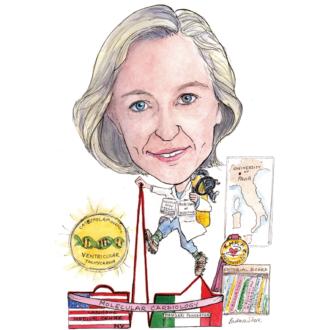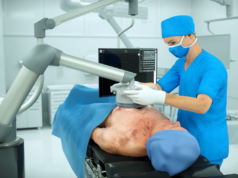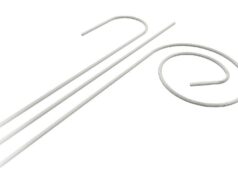
Silvia G Priori spoke to Cardiovascular News about her career, research, joy in spending time with her two children, and the occasion she took beta-blockers before meeting Dr Mike Rosen.
When did you decide you wanted a career in medicine?
In my family there were no physicians, so I remember that initially I wanted to be a basic scientist. By age 16, I was fascinated with the brain and started thinking about studying the electrical signals of neurons. By the time I finished high school, the idea of becoming a neurologist had matured and I decided to go into medicine.
Why did you decide to specialise in cardiac electrophysiology?
I had decided to become a neurologist and study neurophysiology. I was 22 and working as intern in a neurology department when I experienced several fainting episodes. A thorough neurological evaluation came back negative and I was still fainting, so my professor sent me to cardiology and a young attendant started investigating the nature of my fainting spells. He never figured out why I was losing consciousness but he was able to convince me to join the EP group. A few years later he became my husband and the father of my children – I never fainted again, I changed my profession and became very much engaged in studying the electrical signals of the heart.
Who have been your greatest influences?
I remember several fathers of electrophysiology who fascinated me through their seminal scientific papers that I was reading over and over. Dr Mike Rosen was definitely one of the key figures who inspired me. I remember studying hard his seminal contributions on triggered activity. One day my former boss in Italy, Dr Peter Schwartz, asked me to show him the raw data of my studies on delayed after depolarisations. I was so nervous about the idea of presenting science to Dr Rosen that I had to take beta-blockers before meeting him. Despite my concerns, he was very supportive and suggested experiments to improve my work: I put him among my “role models” immediately.
Dr Peter Corr, my US mentor in the eighties, has also been an inspiring figure. I remember him telling me that, despite being very motivated in science, I should never forget to stop to “smell the flowers of life”. I have been grateful to him for this advice that has come back as a wise reminder many times in my life.
What have your proudest moments been?
There is no doubt that the discovery of the gene for catecholaminergic ventricular tachycardia, a genetic disease that causes sudden death in children, has been one of the most exciting moments in my career as scientist. Being able to tell the family who led us to the discovery of the gene that we had finally understood the cause for the juvenile sudden deaths that had plagued them for many years, has been one of the most rewarding moment as a physician.
How far do you think it is possible to go with regard to drugs for arrhythmias?
Pharmacology of arrhythmias has not been very successful when it comes to treating life-threatening ventricular arrhythmias. However, several new pharmacological targets are now being explored and I am confident that the field still has a lot of growth potential. Devices such as defibrillators are today the mainstay of antiarrhythmic therapy; hopefully in the future, the availability of novel drugs will help target devices to selected subgroups of high-risk individuals.
You have specialised in inherited arrhythmia problems like the long-QT syndrome. How do you think the genetic field will influence the treatment of arrhythmias in the next ten years?
Inherited arrhythmogenic syndromes represent a highly challenging group of diseases. Few therapies like beta-blockers and implantable defibrillators are the pivotal treatments to improve survival of affected individuals. Advancements in the understanding of inherited arrhythmogenic diseases are leading to the development of targeted pharmacological approaches as well as biological therapies. We are investigating in our laboratories at Langone Medical Center in New York and at the Maugeri Foundation in Italy, novel strategies to approach possible “cures” for genetically transmitted arrhythmias.
You have great experience working with arrhythmias in both the US and Europe. Are there differences in cardiac rhythm management in the two regions?
Practising medicine in both Italy and in the US is one of the most fascinating experiences as a clinician. I have understood that, despite the fact that we place a lot of confidence in “evidence based medicine,” many of our decisions are based on social factors and are strongly influenced by the attitude of patients. In general my Italian patients prefer to be treated with drugs rather than with devices; they are very concerned about getting devices that are often perceived as “foreign bodies” in the chest. My American patients, on the contrary, prefer to get an implantable defibrillator than to receive life-long drug treatment. I end up trying whenever possible and medically sound to adapt my therapeutic choices to the preference of patients. I have learnt from this experience that medicine is a complex discipline and that scientific evidence is one of the factors that influence medical decisions.
You are former president of the European Heart Rhythm Association (European Society of Cardiology). What were your greatest achievements?
I was the second president of the new EP society in Europe, the European Heart Rhythm Association (EHRA). I started with a small society and a small budget. I was privileged to work with a great and motivated team; in two years we turned EHRA into a very successful society. With the board of the society and the leaders of the committees, we established for the first time an accreditation programme to certify European electrophysiologists, developed a core curriculum to harmonise EP training in Europe and organised an annual meeting to gather electrophysiologists from 50 countries (Western Europe, Eastern Europe, Middle East and North Africa) at the Heart House of the European Society of Cardiology to discuss burning issues in our field. The hard work to achieve these results with my team has been tough but rewarding and to see EHRA developing now into a very successful scientific society is a great achievement that I share with all those who have spent personal time and effort to achieve this goal.
Outside of medicine, what other interests do you have?
Spending time with my children, Andrea, 18, and Gabriel, 15, is the most important thing I do in my free time. We share a great passion for sport such as scuba diving, canyoning and climbing. We like to travel and we have been around the world quite a bit. It is fun to see them growing up bright, independent but still strongly attached to their family and committed to spending their free time to help the disadvantaged. My kids make me feel accomplished as a mother.
Fact file
Director, Molecular Cardiology and Electrophysiology, Laboratories, IRCCS Fondazione Salvatore Maugeri, Pavia, Italy
Associate Professor of Cardiology, University of Pavia
Director, Cardiovascular Genetics Program, Professor of Medicine, The Leon H Charney Division of Cardiology, New York, US
Education and training
1979 – BS Liceo Scientifico, Vigevano, Italy
1985 – MD Medicine – University of Milan, Italy
1989 – Specialist in Cardiology, University of Milan, Italy
1995 – PhD Cardiovascular Pathophysiology, University of Milan, Italy
Professional experience
2007 – Past president and board member European Heart Rhythm Association
2005 – President, European Heart Rhythm Association (European Society of Cardiology)
2005 – Chairman of the Women at Heart Initiative of the European Society of Cardiology
2004 – Adjunct Professor of Pharmacology, SUNY Upstate, Medical Univ Syracuse NY
2002 – Chairman Committee for Practice Guidelines, European Society of Cardiology
2004 – Member of the Education Committee of the Heart Rhythm Society (NASPE)
2002 – Member of the Board of the European Society of Cardiology
Editorial board
Circulation; Circulation Research, European Heart Journal, Journal of Cardiovascular Electrophysiology (associate editor), Cardiovascular Research, Pacing and Clinical Electrophysiology, Italian Heart Journal, Journal of Cardiovascular Pharmacology and Therapeutics










